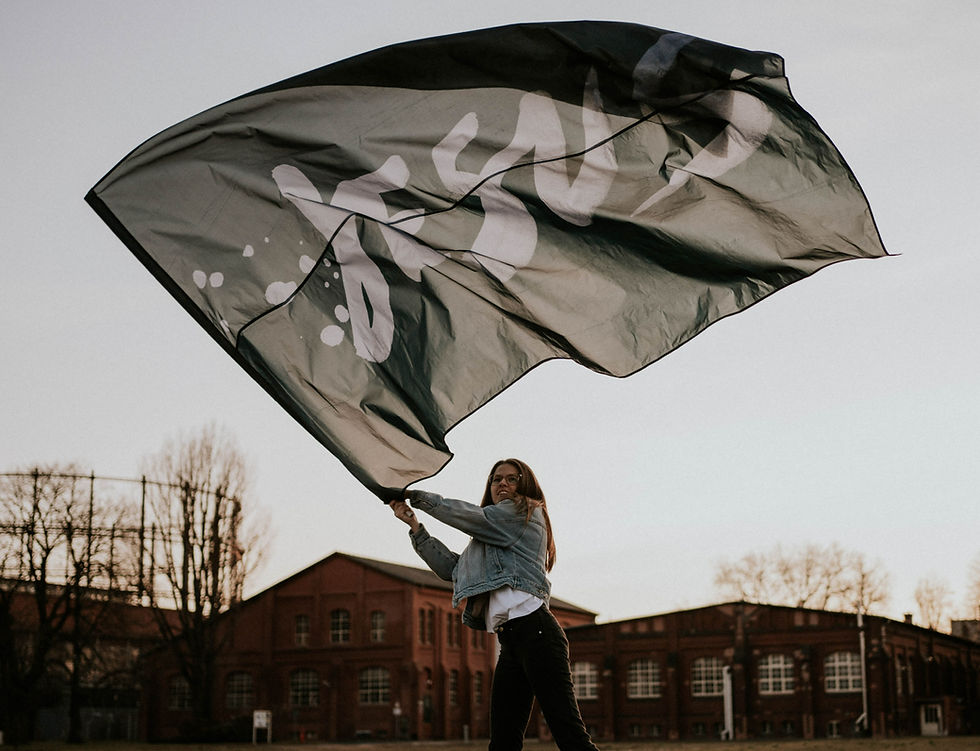The Lord Is My Banner
- Benjamin Kwan
- Jul 12, 2024
- 3 min read

In the month leading up to 9 August (National Day) in Singapore, it can seem that the country’s flag is everywhere. The state flag is hung from flat windows, banners with the state crest are hung from lamp posts, and everywhere you turn, you cannot help but notice the moon and five stars waving in the wind. Of course, the biggest flag of all would be the one that would be flown above the Padang by a Chinook heavy lift helicopter, right as the national anthem is being played on National Day itself. That flag alone is about 30 metres long by 20 metres wide, or 1.5 times the size of a basketball court.
What is needed to get that enormous flag flying high in the sky successfully? A group of 300 individuals, known as the Flag Party, are required from start to finish, to ensure a successful operation. There are those who need to unroll the flag, the riggers who need to rig it up to the helicopter, the loadmasters who need to check that the helicopter is within the correct load tolerances, the pilots who need to fly the helicopter at precise altitudes and speeds to ensure that the flag does not get tangled up.
Why are these 300 individuals putting in all this effort? They are doing so, so that the country’s flag will be given the correct honour it deserves as it flies across the Padang right as the National Anthem is played on 9 August, National Day. They are doing so, not for individual pride or acclamation, but because they are part of a team working together for a greater purpose, of country before self.
During the time of the Exodus, Moses erected an altar to the LORD, and called its name “Jehovah-nissi”, which meant “The LORD is my banner” (Exodus 17:15). A “banner” was a flag or standard that was carried by a flag-bearer in an army, that was to be defended at all costs because it was the representation of the state’s power and glory. On this occasion, the Israelites had just defeated the Amalekites in battle (Exodus 17:8ff), and by constructing this altar, Moses was giving glory to the LORD as the source of their victory over Amalek.
Just like how there were many people needed to work together to ensure that the state flag on the Chinook helicopter flies high on National Day, there were many Israelites working together to achieve victory over the Amalekites, and in so doing, bringing glory to God. There was Moses, who, when he lifted up his hands, helped Israel to prevail over Amalek (Exodus 17:11). There were Aaron and Hur who, when Moses’ hands were heavy, helped him to lift them up, so that Israel could continue to prevail (Exodus 17:12). There was Joshua who was leading the men in the physical fight against Amalek in Rephidim. And of course, there were the unnamed soldiers that Joshua led, who all contributed to the battle as well. All these people were working together so that God could be glorified, so that the LORD could be their banner.
Is the LORD still our banner today? Is He still the one whom we look to, who “orders” or directs our steps? (Psalm 37:23) If He is, then we must collectively work together to glorify Him, just as Moses and the Israelites collectively worked together in the battle at Rephidim. Every single member of the Lord’s body is important, and we all have a role to play (1 Corinthians 12:22-26). We need the elders to oversee the work of the congregation, but the deacons are necessary too, and so are the evangelists, and the teachers, and the encouragers, and the comforters, and the helpers… the list goes on and on.
Is the LORD your banner? If so, let us glorify Him by working for Him together!

Comentários